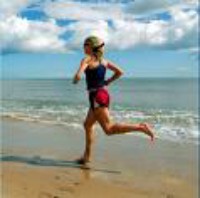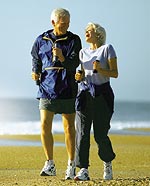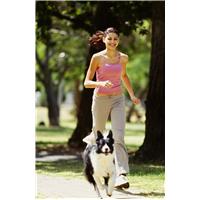 Copenhagen: Jogging for as little as an hour a week can put years on your life, new research has shown.
Copenhagen: Jogging for as little as an hour a week can put years on your life, new research has shown.
Regular running increases the average life expectancy of men and women by around six years, a study found.
The greatest benefit came from jogging at a “slow or average” pace – enough to cause slight breathlessness – rather than pushing to physical limits.
Danish heart expert Dr Peter Schnohr, who led the study of almost 2,000 male and female joggers, said: “The results of our research allow us to definitively answer the question of whether jogging is good for your health.
“We can say with certainty that regular jogging increases longevity. The good news is that you don’t actually need to do that much to reap the benefits.”
The jogging research is part of the Copenhagen City Heart Study which has been monitoring the health of 20,000 Danish men and women aged 20 to 93 since 1976.
A team led by Dr Schnohr looked at death rates among a sub-group of 1,116 male and 762 female joggers over a period of up to 35 years.
Participants were asked how much time they spent jogging each week, and whether they ran at a slow, average or fast pace.
Compared with non-joggers in the main heart study population, the risk of death for both male and female runners was reduced by 44%.
The data showed that, after taking account of age, jogging increased the lifespan of men by 6.2 years and of women by 5.6 years.
Further analysis of the association between jogging and death rate revealed a “U-shaped curve”.
This meant improvements were seen with increasing levels of exercise until an optimum point was reached, after which they reduced.
Between one hour and two-and-a-half hours of moderately paced jogging a week, undertaken over two to three sessions, was ideal, said the scientists.
“The relationship appears much like alcohol intakes,” said Dr Schnohr, who presented the findings today at a meeting of heart experts in Dublin. “Mortality is lower in people reporting moderate jogging than in non-joggers or those undertaking extreme levels of exercise.
“You should aim to feel a little breathless, but not very breathless.”
He said jogging delivered multiple health benefits, including raised oxygen uptake, increased insulin sensitivity, higher levels of “good” HDL cholesterol, lowered blood pressure, and reduced blood clotting.




